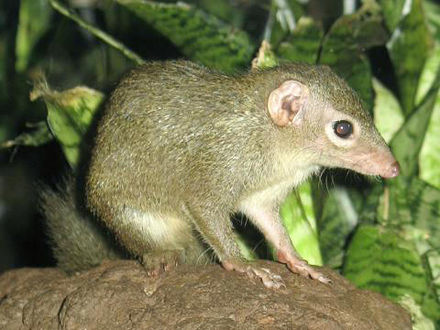How treeshrew body sizes defy the rules
“You’re tearing me apart!” cries James Dean in the iconic scene from Rebel Without a Cause. Though the connection might not be obvious at first glance, the history of categorizing treeshrew species has been similarly fraught and arduous.
A recent paper by Yale Professor of Anthropology Eric Sargis and colleagues highlights a new way to analyze factors driving variation in the defiant common treeshrew. Tree shrews are small, furry mammals roughly resembling squirrels, but they are actually closely related to primates. The study examines body size alteration in the common treeshrew, and whether Bergmann’s rule and the island rule apply. Bergmann’s rule predicts that animals living in higher latitudes and colder climates will be larger than relatives in opposite conditions, while the island rule predicts that when placed on an island, large animals will shrink and small animals will grow larger. But after including new variables and testing how multiple factors interacted, the researchers found that these ecogeographical rules don’t apply to the common treeshrew.
Sargis and colleagues chose to research these animals because of conflicting data from an earlier paper they published. The differing patterns of treeshrew size in this earlier paper inspired him to simultaneously examine the island rule and Bergmann’s rule by controlling for latitude. He analyzed the effect of several new factors on treeshrew body size. In particular, the team looked to see if the shrews were growing larger, as the island rule predicts. “We were getting an island effect, but it wasn’t following the island rule. So, we had to think about other variables and start to incorporate latitude into that,” Sargis said. The research team examined factors known to affect body size such as island area and distance from the mainland, but also included maximum sea depth, a new variable, as a measure of island isolation. Sea depth has not been examined as a factor in previous research, and Sargis hopes it will catch on. “Sea depth is just as important a variable to consider in terms of isolation, because the deeper that sea strait is, the longer that island will probably be isolated as sea level changes,” Sargis explained. This measure of isolation affects the impact of the environment on treeshrew species—the greater the isolation, the greater the impact, and the more strongly ecological rules should apply.
The researchers gathered their data by taking measurements on treeshrew skulls from multiple museums. The shocking results came after comparing their measurements with the skulls’ islands of origin. “It turns out when you take latitude into effect, there is no real island effect; the treeshrews aren’t generally getting smaller or larger on islands,” Sargis said. The only consistent trend was that treeshrews shrunk as latitude increased—the exact inverse of Bergmann’s rule. Researchers have also found confusing body size patterns in other closely-related mammalian species, such as macaques. One species of macaque followed Bergmann’s rule, while the other followed its inverse.
In their next study, Sargis and his group plan to focus on latitude’s effect in the context of the island rule over a wider geographical range. “When we a add sister species of the treeshrew,. that species is a mainland species and it captures a lot of latitudinal variation,” Sargis said. The team’s goal is to control for Bergmann’s rule when analyzing the island rule. They plan to compare an island population to a mainland group at the same latitude, which will help determine whether there is an island effect in the sister species. But for Sargis, the biggest takeaway from this paper is the team’s multi-factor data evaluation.
Treeshrews might not have the star power of James Dean, but to ecologists, they are just as rebellious.

